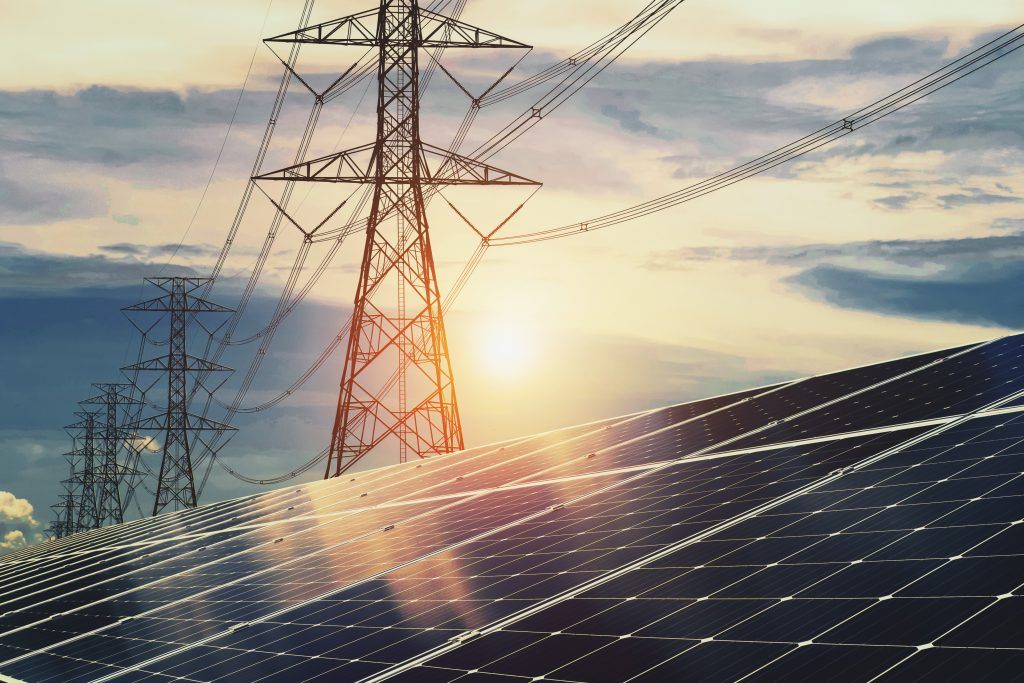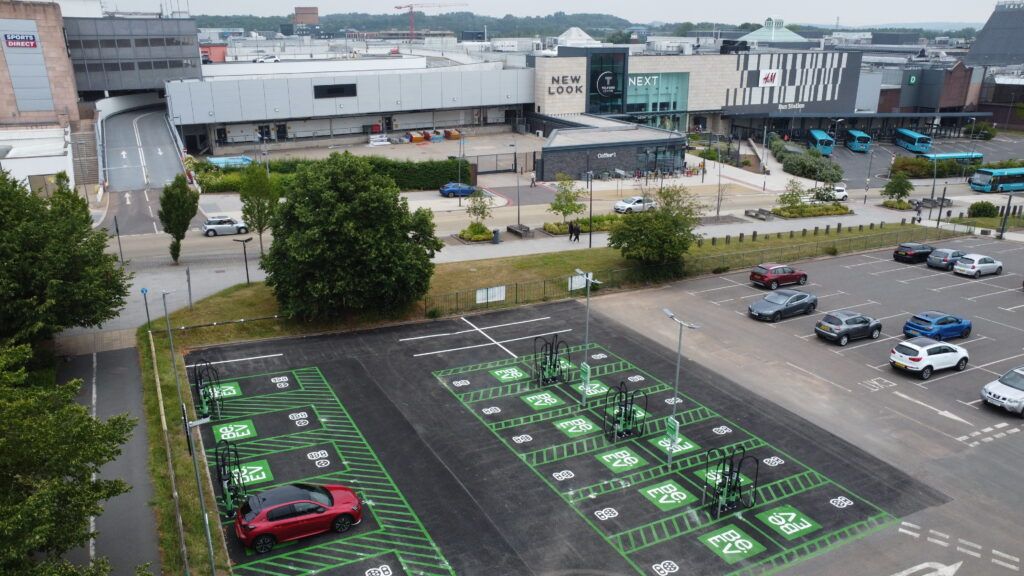The Government has set out its Energy Security Strategy which highlights how Great Britain will accelerate the deployment of wind, new nuclear, solar and hydrogen – in an effort to ensure energy independence over the coming years.
The strategy also supports the production of domestic oil and gas in the nearer term. According to the Department for Business, Energy and Industrial Strategy (BEIS), these new commitments to supercharge clean energy and accelerate deployment could see 95% of Great Britain’s electricity set to be low carbon by 2030.
There is a commitment in the strategy to a significant acceleration of nuclear, with an ambition of up to 24GW by 2050 which would represent up to around 25% of projected electricity demand. Subject to technology readiness from industry, Small Modular Reactors will form a key part of the nuclear project pipeline.
A new government body, Great British Nuclear, will be set up immediately to bring forward new projects, backed by substantial funding, and the Government will launch the £120m Future Nuclear Enabling Fund this month. The Government will work to progress a series of projects as soon as possible this decade, including Wylfa site in Anglesey. This could mean delivering up to eight reactors, equivalent to one reactor a year instead of one a decade, accelerating nuclear in Britain.
The plans also include:
- Offshore wind: A new ambition of up to 50GW by 2030 – more than enough to power every home in the UK – of which up to 5GW could come from floating offshore wind in deeper seas. This will be underpinned by new planning reforms to cut the approval times for new offshore wind farms from four years to one year and an overall streamlining which will radically reduce the time it takes for new projects to reach construction stages while improving the environment.
- Oil and gas: A licensing round for new North Sea oil and gas projects planned to launch this Autumn, with a new taskforce providing bespoke support to new developments – recognising the importance of these fuels to the transition and to the UK’s energy security, and that producing gas in the UK has a lower carbon footprint than imported from abroad.
- Onshore wind: The Government will be consulting on developing partnerships with a limited number of supportive communities who wish to host new onshore wind infrastructure in return for guaranteed lower energy bills.
- Heat pump manufacturing: The Government will run a Heat Pump Investment Accelerator Competition in 2022 worth up to £30m to make British heat pumps, which reduce demand for gas.
There are also plans to increase the UK’s current 14GW of solar capacity which could grow up to five times by 2035, consulting on the rules for solar projects, particularly on domestic and commercial rooftops. An additional aim is for there to be up to 10GW of low carbon hydrogen production capacity by 2030, with at least half coming from green hydrogen and utilising excess offshore wind power to bring down costs. According to the Government this will not only provide cleaner energy for vital British industries to move away from expensive fossil fuels, but could also be used for cleaner power, transport and potentially heat.
The Prime Minister, Boris Johnson, said: “We’re setting out bold plans to scale up and accelerate affordable, clean and secure energy made in Britain, for Britain – from new nuclear to offshore wind – in the decade ahead. This will reduce our dependence on power sources exposed to volatile international prices we cannot control, so we can enjoy greater energy self-sufficiency with cheaper bills.”
This plan comes in light of rising global energy prices, provoked by surging demand after the pandemic as well as Russia’s invasion of Ukraine. The Government says the strategy “will be central to weaning Britain off expensive fossil fuels, which are subject to volatile gas prices set by international markets we are unable to control, and boosting our diverse sources of homegrown energy for greater energy security in the long-term”.
The British Energy Security Strategy will also increase the number of clean jobs in the UK by supporting; 90,000 jobs in offshore wind by 2028 – 30,000 more than previously expected; 10,000 jobs in solar power by 2028 – almost double previous expectations; and 12,000 jobs in the UK hydrogen industry by 2030 – 3,000 more than previously expected.
In total, the British Energy Security Strategy builds on the Prime Minister’s Ten Point Plan for a Green Industrial Revolution, and, together with the Net Zero Strategy, is driving £100 billion of private sector investment into new British industries including Offshore Wind and supporting 480,000 new clean jobs by the end of the decade.
Business and Energy Secretary, Kwasi Kwarteng, said: “We have seen record high gas prices around the world. We need to protect ourselves from price spikes in the future by accelerating our move towards cleaner, cheaper, home-grown energy. The simple truth is that the more cheap, clean power we generate within our borders, the less exposed we will be to eye watering fossil fuel prices set by global markets we can’t control. Scaling up cheap renewables and new nuclear, while maximising North Sea production, is the best and only way to ensure our energy independence over the coming years.”
The strategy follows a series of engagement by the Prime Minister and ministers across Government with key industry leaders, including from the oil and gas, wind and nuclear sectors. The Government continue to work with industry in the coming weeks to drive forward these commitments as fast as industry can deliver.
The full strategy can be viewed here.
Industry reaction:
RenewableUK’s CEO Dan McGrail said: “The renewables industry is ready and able to work with Government to deliver the ambitions set out in the new Energy Security Strategy. Renewables can deliver new, low-cost power quicker than any other option and wind will be at the heart of a secure, affordable net zero energy system.
“Scaling up our ambitions for renewables, and increasing speed of delivery, will help us cut bills and be more energy independent. The sector is investing tens of billions of pounds in cheap wind power, as well as cutting-edge green hydrogen and floating wind technology, so that the UK can reduce our dependence on gas. Green investment is creating tens of thousands of jobs across the UK to support levelling up and reaching net zero faster.”
Duncan Clark, Head of Region UK for Ørsted: “This is a truly momentous day for the offshore wind industry and for every consumer in the UK. Twenty years ago there were only two wind turbines in UK waters, and now, as a nation, we are leading the world in offshore wind and making the changes we need to make offshore wind the backbone of the UK’ electricity system.
“There is no doubt that the technology works, there is no doubt that it is low-cost, and now with the Government and industry committing to make the changes needed to accelerate deployment, there is no doubt that we can deliver the secure, low-cost electricity that the UK needs.”
Deirdre Michie OBE, Chief Executive of Offshore Energies UK, said: “We are pleased that the government’s strategy recognises the vital role of the UK’s offshore energies sector in supporting energy security and the transition to net zero. It will be crucial to ensuring our 2050 Paris Agreement climate commitment stays on course.
“Through the North Sea Transition Deal, the first of its kind by any G7 nation, we have a blueprint for delivering security of energy supply through oil and gas, while accelerating crucial cleaner energies like offshore wind, hydrogen and carbon capture. We recognise that this is an important moment in the energy transition and this challenge requires everyone and every level of government across the UK to be involved if this plan is to succeed.”
Clare Jackson, CEO of Hydrogen UK, said: “We are thrilled that the Government has doubled down on hydrogen by increasing the production target to 10GW, recognising that hydrogen is a key part of the net zero transition. This new goal will allow industry to unleash investment, bring down costs and widen the use-case for hydrogen, exploring its potential in transport, heavy industry and to heat homes.”
Chris O’Shea, CEO Centrica, said: “In recent months, we’ve seen the impact of global rising energy prices on UK households. The geopolitical landscape means it’s more crucial than ever that the UK has robust and secure supply chains for many things, including energy. The British Energy Security Strategy is something we can all get behind to protect the nation and help households today and over the long term. We welcome the Government’s boost for renewables and nuclear and the focus on kick-starting the hydrogen economy.
“This will help us reduce our dependency on foreign gas and, done properly, could help make us a net exporter of energy, boosting our economy and creating well paid, highly skilled jobs. We look forward to working closely with the Government to do everything we can to bring this strategy to life.”
Shell CEO, Ben van Beurden, said: “This is a once-in-a-generation opportunity to ensure an orderly transition to net zero while bolstering the UK’s energy security and Shell is ready to play our part. We plan to invest up to £25 billion in the UK energy system over the next decade subject to Board approval, and more than 75% of this is for low and zero-carbon technology. Offshore wind, hydrogen and CCS will all be critical but we need the right policy frameworks in place. We look forward to working with government on the important detail in order to make this a reality.”
Sam Laidlaw, Executive Chairman of Neptune Energy, said: “The Energy Security Strategy breathes new life into the North Sea, giving investors confidence to allocate significant capital to the diverse range of energy supply we will need through the energy transition. UK energy projects are national priorities – and the country cannot wait.
“Neptune Energy will invest to support these priorities. Immediately, we are increasing production from our Duva field in Norway – enough gas to heat an additional 350,000 homes in this country. In the mid-term, we will bring on further supply from our Seagull field in the UK North Sea, starting early next year. And longer-term, with our partners, we’ve agreed to invest $100m in drilling an appraisal well at the Isabella discovery in UK waters.
“Returns from those and other developments can be recycled into new energy projects to help create a net zero future. Repurposing of existing North Sea infrastructure will pave the way for low carbon energy hubs, CCS and hydrogen – maintaining diversity and security of supply for decades to come.”
Alistair Phillips-Davies, Chief Executive of UK-listed low-carbon infrastructure company SSE, said: “The current energy crisis is driven by our reliance on imported gas and it’s clear that the only way to tackle the underlying cause is to ramp up investment in home-grown, clean energy infrastructure; today’s package represents a significant step towards that goal.
“We particularly welcome the increased ambition and commitment to accelerate delivery of offshore wind as the backbone of a cleaner, more secure energy system, but also critically the acknowledgement that accelerating investments into network infrastructure and flexible technologies like pumped storage, alongside a developing hydrogen economy, will be essential if we are to make that ambition a reality.
“The intent from government today is clear; now it’s about delivering it. We’re already investing £12.5bn in low-carbon infrastructure over the next five years and have announced today that we will be creating 5,000 new skilled, green jobs in the process. And with further policy development in the coming months, we can move from ambition on paper to shovels in the ground and jobs in local communities.”
EDF’s UK CEO Simone Rossi said: “Britain is right to take control of its energy future, with a step change in ambition for electricity from wind, nuclear and solar, and greater energy efficiency. Building more new nuclear will reduce Britain’s dependence on overseas gas and keep energy prices stable, creating thousands of jobs while we’re doing it. At Hinkley Point C we’re already building British nuclear, with 3,600 British businesses and 22,000 people making it happen, including over 800 apprentices.
“The fastest way to get more nuclear in Britain is get on with the next two units at Sizewell C. It’s a copy of Hinkley Point C, the design is approved and ready to go, and British manufacturers are experts in how to build it. Building more of the same design is the best way to bring down costs and develop a strong UK supply chain.”
Emma Pinchbeck, Energy UK’s CEO said: “Industry has committed to delivering a net zero power system in the 2030s as the best way to provide secure and cheap power to the UK. We support the Government’s recommendations in the Energy Security Strategy to accelerate the deployment of domestic clean power sources, build a modern energy system, and reduce demand for volatile international gas.”
Image courtesy of Shutterstock.














